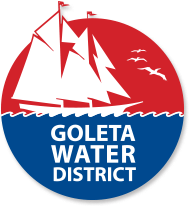Development and Water


*Measure J is a voter-approved measure enacted in 1988 to restrict conversion of agricultural water credit to residential and commercial uses. Under Measure J, agricultural water credit cannot be converted unless the parcel is two acres or less; the zoning is already residential, commercial or industrial; and the Board of Directors determines that the new water use will be at least 35% lower than pre-1988 usage. Measure J is included as Appendix E to the Goleta Water District Code.
FAQ’s
Q: Who approves development projects and what is the Goleta Water District’s role?
A: Development is approved by agencies given land use authority under the State Constitution, including the City of Goleta and the County of Santa Barbara. The District has no land use authority and does not approve projects or determine whether or not a project will have adverse impacts on the community. The District’s role is limited to issuing water allocations through the Can and Will Serve process illustrated above. Any project currently requesting additional water is reviewed on an individual basis and will be provided with water if they have historical water use on the property.
Q: Is the District currently issuing Can and Will Serve letters for new water service to projects?
A: Only under limited circumstances. Under the voter-approved SAFE Water Supplies Ordinance, the District has been operating under a New Water Service Moratorium since October 2014, which prevents it from issuing new water entitlements unless the project has pre-existing water rights. The District has only issued Can and Will Serve letters to projects that secured water allocations prior to October 1, 2014. By law, the District cannot take water rights away, nor can it prevent property owners from exercising water entitlements that were approved and paid for prior to the Moratorium.
Q: What is the SAFE Ordinance?
A: In 1991, Goleta Valley voters approved the SAFE Water Supplies Ordinance. The SAFE Ordinance prohibits the District from releasing potable water to for new or additional service connections except when all of the following conditions are met:
- The District is receiving 100% of its deliveries normally allowed from Cachuma
- The District has met legal obligations in the Wright Judgment that governs the Goleta Groundwater Basin
- There is no water rationing
- The District has met its obligation to the Annual Storage Commitment to the Drought Buffer
All of the conditions have not been met since October 1, 2014, when the District stopped offering new water allocations. Since then, any new development has occurred on parcels with existing water credits or historic entitlements approved before October 1, 2014.
Q: When will new water allocations/meters be made available by the District?
A: The District currently estimates it will be able to make new water allocations starting January 1, 2024. If the Board of Directors authorizes new water allocations, the District may issue up to one percent of its total potable water supply to new or additional service connections (approximately 155 acre-feet per year) when specific conditions are met under the SAFE Ordinance. The District must re-evaluate its supplies every year to determine if it can continue to issue new allocations.
Q: Is there a waiting list for new water allocations/meters?
A: No. When the moratorium on new water allocations is lifted, projects can request new water allocations on a first come first serve basis.
Q: If water is not allocated in one year, does it roll over cumulatively to the next year?
A: No. The SAFE Ordinance authorizes the District to release a maximum of 1% of its annual total available supply for new water connections for that year.
Q: When can new projects secure their water entitlement?
A: Per District Code, new projects can only secure new water entitlement after final approval of the project by the applicable land use agency. Applicants without final approvals by the land use agency cannot “pre-pay” for water entitlement.
Q: How does the District plan for future growth?
A: The District has an extensive water supply planning process, including water management plans (available on the District’s website) and water supply assessments submitted to the state annually. Additionally, the state-required Urban Water Management Plan requires the District to perform an in depth water supply and demand analysis every five years and illustrate that its projected supplies are sufficient to meet projected new demand, including projected population growth and proposed development. The District’s Urban Water Management Plan estimates water demand based upon full buildout and population growth through 2045.
Q: How much water will new development use if approved?
A: Many new developments are multi-family housing units with mainly indoor water usage and shared low water use outdoor landscaping. New housing is not projected to materially increase water use, largely as a result of plumbing code changes, improved efficiencies, and water wise landscaping. The average multi-family residential unit uses approximately 0.15 acre-feet per year per unit, which equates to about a quarter of the average usage for a single family residence.


